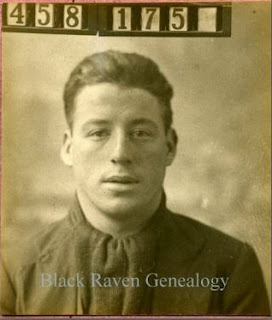In September 1881, Miles McGrane died of tuberculosis. Margaret, his wife of thirty years, had celebrated her fiftieth birthday eight months before. She was left alone to finish rearing their children, the youngest of whom was ten years old. Death was not a stranger in the McGrane household, however. Only five of their twelve known children had lived to see their tenth birthdays.
The situation Margaret found herself in was far from uncommon in Ireland then. She was born Margaret Doyle in Dublin city in January 1831. In the years before her marriage, famine had claimed the lives of over one million people. Death, on this scale, was a shock to the Irish nation. But, in more normal times, early death was so prevalent it was an accepted part of everyday life.
 |
The path to Margaret (Doyle) McGrane
|
Sometimes, I wonder how people coped with seeing their relatives die so young and in such numbers. And, I’ve come to the conclusion, their belief in God allayed the fear of death, far more then than it does today.
No doubt grief took its toll, but the focus was more on achieving a ‘good death’. Margaret’s husband died a ‘good death’. Having been sick for two months, as a Catholic, he would have received ‘the last rites’. This sacrament helps ensure the terminally ill are emotionally and spiritually prepared to die. Little else mattered, either to those facing death or to those who mourned their passing. And, as it still does today, belief in the afterlife provided a great comfort to those left behind.
When Miles died, Margaret became the head of the household. The responsibility for managing the family’s finances passed to her. And, even though she had never learnt to read and write, she proved herself a capable provider. Most likely, she had little choice.
Margaret set up a greengrocer's shop at her home in Lower Oriel Street. The venture was presumably a success as her eldest daughter followed in her footsteps.
My third great-grandmother even operated as a local estate agent of some kind. It’s hard to know now what this entailed exactly. But, the advertisements she placed in the newspapers of the day are a testament to her enterprise.
 |
Freeman’s Journal, 4 August 1888, p. 1
|
 |
| Freeman's Journal, 31 January 1900, p. 1 |
In the eyes of Margaret’s surviving children, their mother was a rock of strength. She was usually present to help with the birth of her grandchildren. Then, if they died as infants, as many did, it was often Margaret who carried their remains to the cemetery.
Margaret resided in Lower Oriel Street for the rest of her days. She continued to share a home with her youngest daughter Alice. Alice married James Vickers and together they had three children, Alice, Patrick, and Myles.
At the age of seventy-two years, Margaret developed asthmatic bronchitis. She suffered from the disease for five months, before it finally claimed her life. On 9 August 1903, she died at her home, surrounded by her family. Her funeral took place in Glasnevin Cemetery. There, she shares a grave with her husband, their infant children and a grandchild.
At the age of seventy-two years, Margaret developed asthmatic bronchitis. She suffered from the disease for five months, before it finally claimed her life. On 9 August 1903, she died at her home, surrounded by her family. Her funeral took place in Glasnevin Cemetery. There, she shares a grave with her husband, their infant children and a grandchild.
Without a doubt, Margaret also died ‘a good death’.
……………
© Black Raven Genealogy






